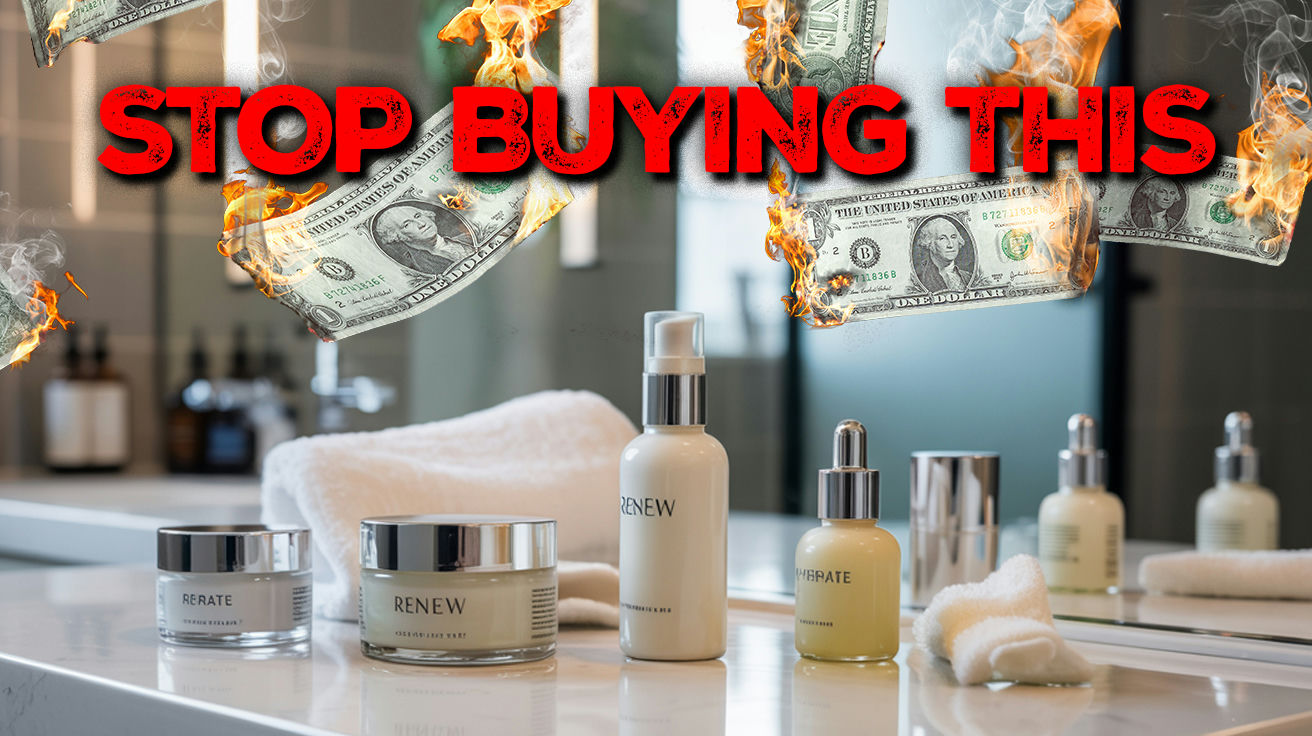Your money doesn’t just disappear—it leaks through a thousand tiny holes you never noticed. These financial vampires operate in stealth mode, draining your bank account while you’re distracted by obvious expenses like your coffee budget.
From dealership sleight-of-hand to subscription zombies lurking in forgotten corners of your phone, these wallet-draining habits cost the average household $2,400 annually. Conservative estimate: implementing just five of these fixes puts that money back where it belongs—in your pocket.
20. The 84-Month Car Loan Mirage

Car dealerships have turned payment manipulation into high art, stretching your loan to biblical lengths just to hit that magical monthly number dancing in your head. They’ll load your purchase with warranties and protection packages that benefit their bottom line and waste your money, all while you focus on keeping payments under $400.
Shopping with total price in mind instead of monthly payments transforms the entire game. Calculate your all-in ownership costs—insurance, maintenance, fuel—before stepping foot on any lot. If you’re tired of dealer manipulation, this simple shift saves thousands annually.
19. The Subscription Zombie Apocalypse

Forgotten subscriptions are the undead of personal finance—they never stop feeding on your bank account while you sleep. That streaming service you haven’t opened since last season’s finale is still charging you $14.99 monthly, along with that meditation app you used exactly once.
Schedule quarterly subscription audits and ruthlessly cancel anything unused in 30 days. These small recurring charges add up to hundreds annually that could fund your actual goals instead of corporate profit margins. Forgotten subscriptions are silent wealth destroyers—quarterly cleanups prevent the bleeding.
18. The $2,000 Coat Rack

Peloton bikes gathering dust in spare bedrooms represent expensive monuments to optimism gone wrong. Home exercise graveyards are littered with good intentions and maxed-out credit cards, turning aspirational purchases into the world’s most expensive clothing racks.
Zero-cost options like neighborhood walks or YouTube workouts prove your commitment before any cash changes hands. Only after maintaining consistent habits for three months should equipment enter the conversation. Unused equipment depreciates faster than enthusiasm—but proven habits are worth their weight in gold.
17. Product Hopping Syndrome

Beauty and wellness industries thrive on convincing you that salvation lives in the next bottle, while your bathroom drawers overflow with half-used “miracle” products that delivered nothing but buyer’s remorse. That $45 serum you used twice is basically expensive drawer decoration at this point.
Force yourself to finish one product completely before buying its replacement. Consistent use over several weeks gives products time to actually work, and this simple rule can save you $300+ annually on beauty impulse buys. Patience pays dividends when skincare gets time to deliver results.
16. The Fee Erosion Effect

A seemingly small 1% management fee might sound trivial until you realize it can consume nearly a third of your lifetime returns. These percentage-based fees grow as your wealth grows, creating an ever-larger drain on your financial future that compounds against you over decades.
Learn basic investment principles and consider low-cost index funds instead of high-fee managed products. This fundamental knowledge can literally save you hundreds of thousands in unnecessary fees over your investing lifetime. Small fees compound into large problems—conducting thorough research can reveal avoidable financial fees that may significantly impact your long-term savings.
15. The Get-Rich-Quick Carousel

Financial TikTok and investing apps have gamified money management into something resembling a casino more than wealth-building strategy. Constant switching between hot stocks and crypto trends typically delivers worse returns than boring fundamentals, while app notifications create FOMO-driven decision making.
Automate regular investments into low-cost index funds and ignore the noise completely. The unsexy approach of consistent contributions to diversified investments has created more millionaires than any trading app or guru’s master class. Market timing fails 90% of the time—but time in the market succeeds consistently.
14. Extended Warranty Hustle

Extended warranties represent retail’s favorite profit center because they’re almost pure margin dressed up as protection. Most electronics either fail immediately—covered by manufacturer warranty—or long after any extended coverage expires, making these plans profitable for stores and useless for you.
Check your credit card perks before checkout, since many automatically double manufacturer warranties without costing you a dime. That five-second verification saves you from the $89 protection plan on a $200 item that statistically will never need repair. Credit card benefits beat retailer upsells—when you remember to use them.
13. The Gadget Graveyard

Your junk drawer serves as a museum of impulse purchases that once promised life transformation. That spiralizer, specialized garlic press, and smart water bottle all seemed essential until reality hit about 48 hours post-purchase, leaving you with buyer’s remorse and less cabinet space.
Get ruthlessly clear about what actually matters to you, then cut mercilessly in categories you don’t care about so you can spend lavishly on genuine joy. If you’re drowning in unused gadgets, this approach transforms random purchases into intentional investments.
12. The “Investment” Lie

Luxury purchases wearing financial disguise plague household budgets everywhere—from $3,000 mattresses to designer wardrobes. True investments generate returns, while these depreciating assets masquerade as smart money moves the moment you swipe your card.
Call purchases what they are without the mental gymnastics. Nothing’s wrong with buying luxuries you can afford and enjoy—just drop the financial self-deception that turns splurges into “smart money moves.” Honest spending habits prevent rationalization cycles that drain accounts faster than any subscription service.
11. The False Economy Trap

Buying the cheap version three times costs more than buying the quality version once, yet we fall for this trap repeatedly. That $20 blender replacement cycle drains your wallet twenty dollars at a time while delivering consistently disappointing smoothies that taste like regret.
Identify your high-use items and invest appropriately in things you touch daily—shoes, mattresses, kitchen tools. The quality version often costs less per use over time, making that upfront investment actually smart money management. Daily essentials deserve premium treatment—everything else can wait.
10. The Oversized Truck Syndrome

F-150s might look impressive in driveways, but hauling air 95% of the time means burning money with every mile. Many truck owners finance lifestyle image rather than meeting actual transportation needs, paying premium prices for capabilities they rarely use.
Be honest about daily driving reality versus occasional needs, because that twice-yearly Home Depot run doesn’t justify year-round gas guzzling. Renting a truck for those specific trips costs far less than the premium you’re paying in fuel, insurance, and depreciation. Basic math wins over ego every time when you crunch the numbers.
9. The Self-Care Spending Spiral

“Self-care” has morphed from basic maintenance into a blank check for emotional spending, turning stress relief into stress creation. That $200 spa day feels therapeutic until the credit card bill arrives and triggers fresh anxiety waves, defeating the entire purpose.
Create a realistic self-care budget aligned with your financial goals rather than your momentary feelings. True self-care shouldn’t create financial stress, and often the most effective forms—exercise, adequate sleep, time with friends—cost nothing but deliver the greatest benefits. Stressed about spending on stress relief? You’re doing self-care wrong.
8. The Tracking App Overload

Having seven different budgeting apps doesn’t make you financially responsible—it creates control illusion while actually complicating your life. Too many categories and tracking points lead to decision fatigue and system abandonment, turning helpful tools into digital clutter.
Focus on four key metrics: income, expenses, savings rate, and debt. This simplified approach provides actionable insights without drowning you in unnecessary details that ultimately sabotage the entire system. Complex tracking creates analysis paralysis—simple metrics drive real action.
7. The Lifestyle Purchase Delusion

Products promising life transformation rarely deliver on their marketing promises. High-end cameras don’t automatically create photographers any more than expensive cookware creates chefs—you’re purchasing fantasy, not function.
Before major purchases, ask what you’re really buying and whether the product alone can deliver that transformation. If it’s a new identity or lifestyle, recognize that gear won’t create the change you’re seeking. Smart shoppers see through marketing magic and focus on actual utility instead of aspirational stories.
6. The Homeownership Myth

The “renting is throwing money away” mantra ignores massive homeownership costs beyond the mortgage payment. Property taxes, insurance, maintenance, and opportunity costs can make renting financially superior in many situations, especially when you factor in flexibility and reduced responsibility.
Run comprehensive analysis before buying that considers both financial factors and lifestyle preferences. Sometimes renting and investing the difference creates more wealth and freedom than tying up capital in a primary residence. If you’re chasing the American Dream, make sure the math actually works in your favor.
5. The Renovation Fantasy

Most home improvements return pennies on the dollar at resale, making them terrible financial investments despite what HGTV suggests. $50,000 kitchen remodels might add $30,000 to your home’s value—a 40% loss before factoring in disruption, stress, and opportunity cost.
Renovate for your enjoyment, not as financial strategy, and be honest about your motivations from the start. Clear thinking helps make better decisions about home improvement dollars and prevents disappointment when returns fall short of expectations. Happiness matters, but don’t dress up splurges as investment wisdom.
4. The Rewards Card Illusion

Chasing credit card points while carrying a balance is like picking up pennies in front of a steamroller. Those travel rewards aren’t worth the 18-27% interest you’re paying on revolving debt, and the math never works in your favor when you’re financing your lifestyle.
Pay balances in full every month or don’t use credit cards—there’s no middle ground that makes financial sense. Create aggressive debt payoff plans for existing balances and prioritize interest elimination over point accumulation. Carrying balances for rewards points is like buying lottery tickets with borrowed money.
3. The Insurance Product Confusion

Whole life insurance policies get sold as investments, but they typically deliver poor returns while generating hefty commissions for agents. These complex products benefit sellers far more than buyers seeking protection, wrapping expensive fees in confusing language that obscures the true costs.
Stick with term life insurance for protection and invest the difference yourself in low-cost index funds. This straightforward approach typically yields better long-term results without high fees and surrender charges that trap your money. Simplicity beats complexity when building financial security.
2. The Course Collection Habit

Buying online courses you never complete is the digital equivalent of purchasing exercise equipment that becomes a clothing rack. Information without implementation has zero value for your bank account or your skills, turning learning into expensive procrastination.
Commit to finishing what you’ve already purchased before buying more educational content. Knowledge only creates value when applied consistently, so focus on implementation rather than endless acquisition. If you’re collecting courses without completing them, you’re hoarding information instead of building skills.
1. The Premium Card Status Symbol

Metal credit cards with impressive annual fees might make satisfying sounds when you drop them on tables, but unused benefits make them just expensive accessories. Premium cards only make sense when you extract value exceeding their cost, not when you’re paying for bragging rights.
Audit actual usage patterns yearly against the annual fee and downgrade ruthlessly if benefits go unused. Match your financial tools to real habits, not Instagram aspirations, because paying for status you don’t use is the opposite of smart money management. Substance beats style when building wealth.






























